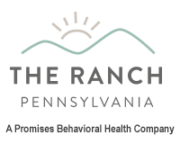What’s the difference between drug abuse vs. drug addiction?
How do you know if either is a problem for you or a loved one?
A substance use disorder, a term encompassing drug abuse and drug addiction, is a progressive medical condition.
Let’s dive into what constitutes a substance use disorder or addiction and what’s defined as drug or substance abuse. In recent years, terminology for substance issues has changed, making things a little more confusing.
Let’s start with some definitions:
“Substance abuse,” according to WebMD.com, exists when an individual is “… both overusing a substance and using a substance in a manner other than its intended use…”
“Addiction,” however, is defined as a disease; causing chemical alterations in the brain. According to the National Institutes of Health: National Institute on Drug Abuse, individuals with substance use disorders compulsively use substances despite repeated negative consequences.
Think of all substance use disorders as progressive medical conditions with early and late stages. There are plenty of people with heart conditions, but they vary in severity.
On the lower end of the spectrum, there are individuals with no substance problems or who show some troubling early behaviors with substances. On the opposite end of this spectrum are individuals with a physical or psychological dependence upon substances and are at risk of a fatal outcome.
The Ranch Pennsylvania is an educational resource for anyone dealing with their own substance use issues or those of a loved one. We are here to guide you through the sometimes confusing world of addiction and recovery jargon.
Understanding the definition of a substance use disorder could save a life, maybe your own. When this disorder goes untreated, the result is fatal. However, there are stages before reaching this point.
We can sort through the terminology together and give you clear criteria for what equals a problem and what equals dependence. Where is the line between these two? And, how do I know if I’ve crossed the threshold from abuse to a substance use disorder?
Substance Use Disorder Terminology Explained
When an individual goes for an assessment for a substance use disorder or a mental health disorder, clinicians and doctors rely on the most recent edition of what’s known as the “Diagnostic and Statistical Manual of Mental Disorders,” also known as the DSM-V or DSM 5.
Published by the American Psychiatric Association (APA), this manual is periodically revised. The fifth edition, the latest, was published in 2013 and adjusted the definitions for substance use disorders.
According to the APA, “Substance use disorder in DSM-5 combines the DSM-IV categories of substance abuse and substance dependence into a single disorder measured on a continuum from mild to severe.”
For this reason, the term “substance use disorder” often replaces terms like drug addiction, substance abuse, and substance dependence within most treatment industry standards. “Substance use disorder” incorporates both abuse and dependence.
For a more thorough explanation of the APA’s revision of the DSM-V and substance use disorders, read “American Psychiatric Association: Substance-Related and Addictive Disorders.”
The Progression of a Substance Use Disorder in Real Life
Christine was raised in an alcoholic home. Her mom was diagnosed with a substance use disorder, and her grandfather on her mom’s side also had a severe problem with alcohol. So, Christine has a family history of substance use disorders.
At 13, Christine started drinking. She experimented a few times, mainly with beer. At 15, she tried some harder liquor and marijuana. By the age of 18, Christine’s frequency of drinking increased to a point where she would drink two or three weekends each month, always to intoxication.
During this period, Christine tried to control her drinking by cutting back or stopping completely. She always ended up drinking again.
By 21, Christine was on academic probation at college due to her drinking. Because of her academic problems, she couldn’t play college soccer and lost her scholarship. In several instances, she put herself in risky situations by drinking until she passed out.
At the age of 25, Christine is experiencing depression and low self-esteem. She is embarrassed about her performance in college and her lack of a degree. In addition, Christine is confused about the direction of her life and frequently misses work because of heavy drinking the night before.
Does Christine have a substance use disorder?
Checking the Substance Use Criteria Boxes
To determine where Christine fits within the definition of substance use disorders, we can look at the DSM-5 criteria.
The following is a list of eleven substance use disorder criteria published in the article, “DSM 5 Criteria for Substance Use Disorders,” written by Elizabeth Hartney and published in 2020 at VeryWellMind.com.
- Taking the substance in larger amounts or for longer than you’re meant to.
- Wanting to cut down or stop using the substance but not managing to.
- Spending a lot of time getting, using, or recovering from the use of the substance.
- Cravings and urges to use the substance.
- Not managing to do what you should at work, home or school because of substance use.
- Continuing to use, even when it causes problems in relationships.
- Giving up important social, occupational or recreational activities because of substance use.
- Using substances again and again, even when it puts you in danger.
- Continuing to use, even when you know you have a physical or psychological problem that could have been caused or made worse by the substance.
- Needing more of the substance to get the effect you want (tolerance).
- Development of withdrawal symptoms, which can be relieved by taking more of the substance.
Based upon the short summary of the information we have relating to Christine’s substance use, she seems to fit at least seven of the criteria. This indicates a more severe problem with alcohol.
Breaking It Down: Where Does It Start and Where Does It End?
Research shows the earlier an individual begins using substances, the more likely these individuals will become dependent in the future. Hence, why the question of drug abuse vs drug addiction matters. Other mental health and medical problems are also more likely.
Progression of a substance use disorder appears to move more quickly when someone starts drinking or using drugs before the age of 14. This is especially true for individuals, like Christine, with a family history of substance use disorders.
For information about early drinking and substance use disorders, read “Early Drinking Linked to Higher Lifetime Alcoholism Risk,” published by the National Institute on Alcohol Abuse and Alcoholism.
One study found that, for individuals who began drinking before 14, around 47% showed an alcohol dependence later in life.
What if Christine’s parents took her for a substance use disorder assessment at a qualified treatment facility at the age of 14? Was she dependent upon alcohol at 14?
Her drinking would likely be an obvious concern, but she would not fit the criteria of someone with a severe substance use disorder. The seeds of a problem existed at 14, but continued drinking without intervention would likely lead to a serious problem.
At 14, Christine wouldn’t be able to check as many of the criteria as she could at 21 or 25. The disorder’s progression hadn’t reached a point where she suffered academic, relational or financial losses due to her use of substances.
Coming Full Circle
Come back to our original question, ‘How do you know if drug abuse vs. drug addiction is a problem for you or a loved one?
If you still aren’t sure where you fit, check it out. Taking an honest inventory of your drinking and drug use could save your life.
With the help of a qualified chemical dependency clinician, determining if a mild or severe substance use disorder is present won’t take much time. Knowing the truth is always better than staying in a fog and allowing the disorder to progress.
In 1950, E. Morton Jellinek created the Jellinek Curve, which is still used today. This curve shows the progression of a substance use disorder. Jellinek also explored the stages of recovery.
Jellinek called a substance use disorder a disease because the disorder fits the following criteria: Primary, progressive, chronic and, if untreated, fatal.
For more information about the Jellinek Curve, read “The Stages of Alcoholism” published on WebMD.com.
The Jellinek Curve is a helpful tool for individuals taking a hard look at their history of substance use.
Does Everyone Develop a Problem After Using Drugs or Alcohol?
At 13, Christine’s first experiments with drugs and alcohol probably included friends her own age. Some of these friends never developed a substance use disorder. So, why did Christine end up with this chronic and potentially fatal condition?
Sadly, we can’t predict who will experience a substance use disorder.
However, we can stay alert to some conditions that make this disorder more likely.
Family history
Family history is a red flag. If you or a loved one has a family history of substance use disorders, become educated on the subject. This is especially true for parents of young children. Understand the disorder, so you can help prevent it or identify early warning signs.
Early experimentation
Using drugs and alcohol under the age of 14 is another red flag because early use can speed up the disorder’s progression.
History of trauma
Individuals with post-traumatic stress disorder are more likely to develop substance use disorders as a coping mechanism.
Mental health disorders
For people with mental health disorders, self-medicating with alcohol or drugs can be tempting.
Chronic pain
Anyone suffering from chronic pain is also vulnerable to a substance use disorder. Pain medications can be easily abused, and the disorder can quickly take a firm hold.
Even if you fulfill all the above conditions, this doesn’t mean you will develop a substance use disorder. Recreational use of certain drugs and alcohol is possible for some.
Education is the key to keeping yourself and your loved ones safe. Understanding what a substance use disorder means, knowing the signs and symptoms of a disorder, and remaining willing to learn more is the best prevention.
Approximately one in every 10 people experience a substance use disorder. There is no shame in asking for help or clarification on the subject.
If you’re wondering about drug abuse vs drug addiction or suspect a loved one has a problem, check it out.
The Ranch Pennsylvania has qualified clinicians and staff available at all hours to answer questions and provide support. Call 717.969.9126.

